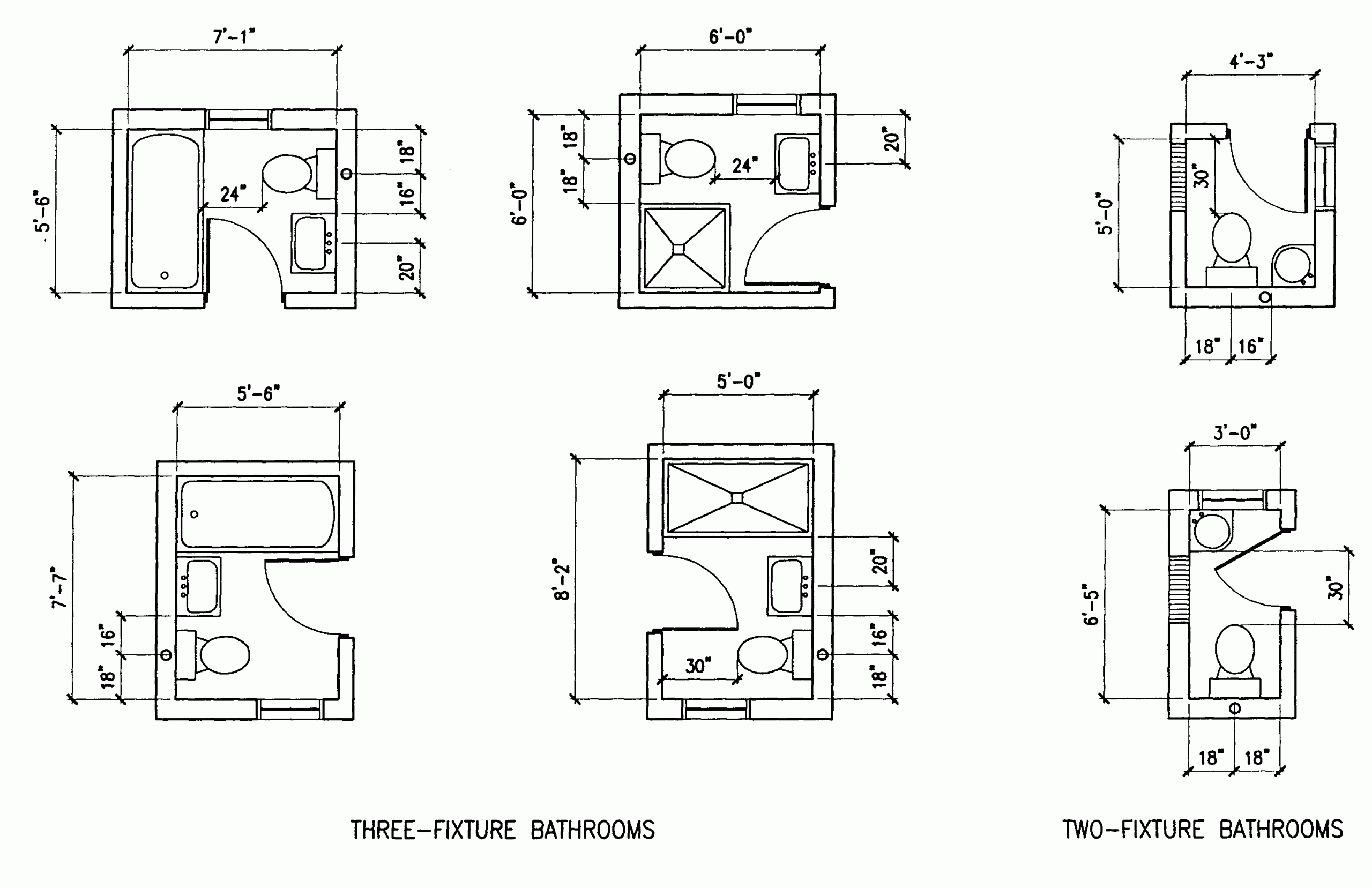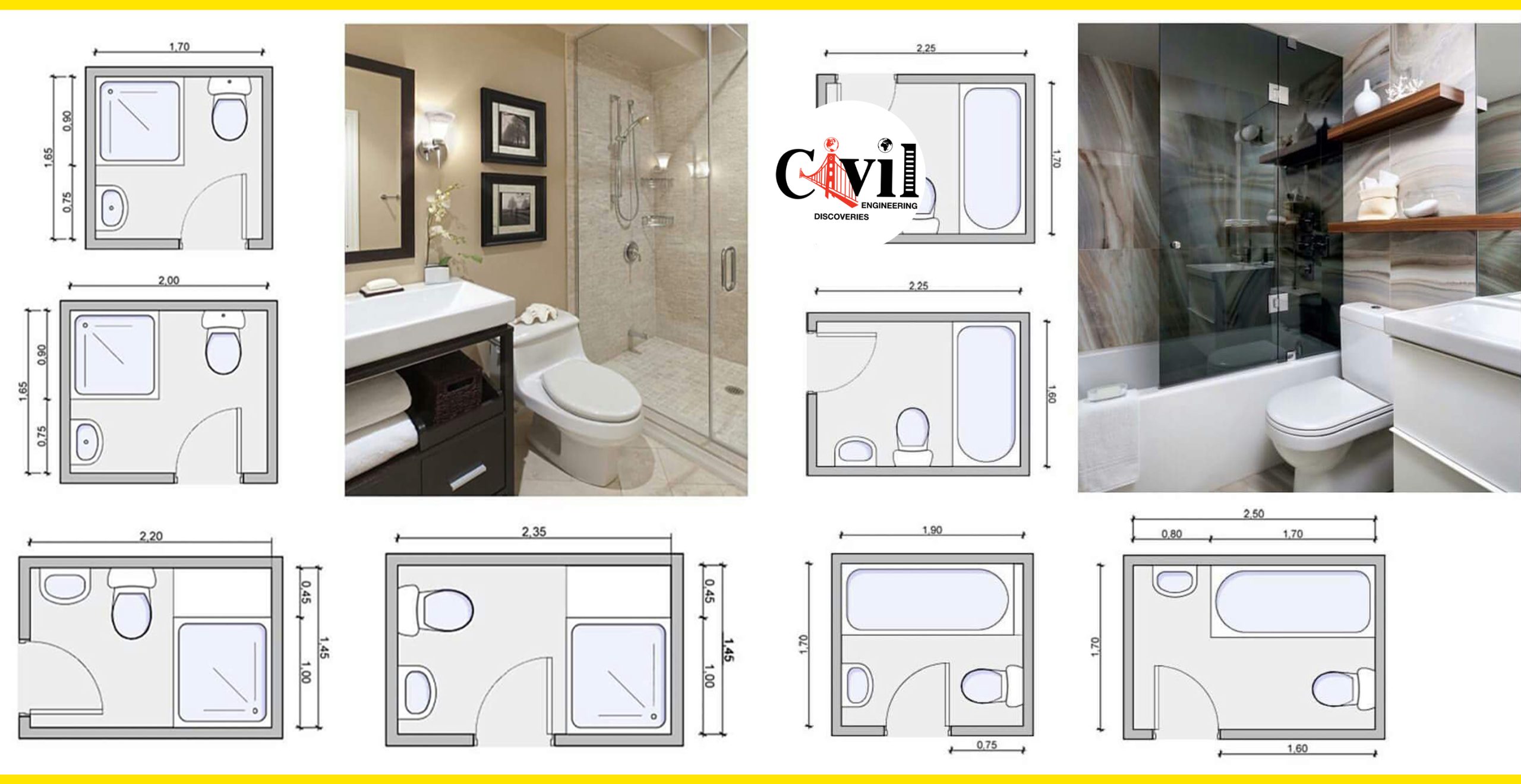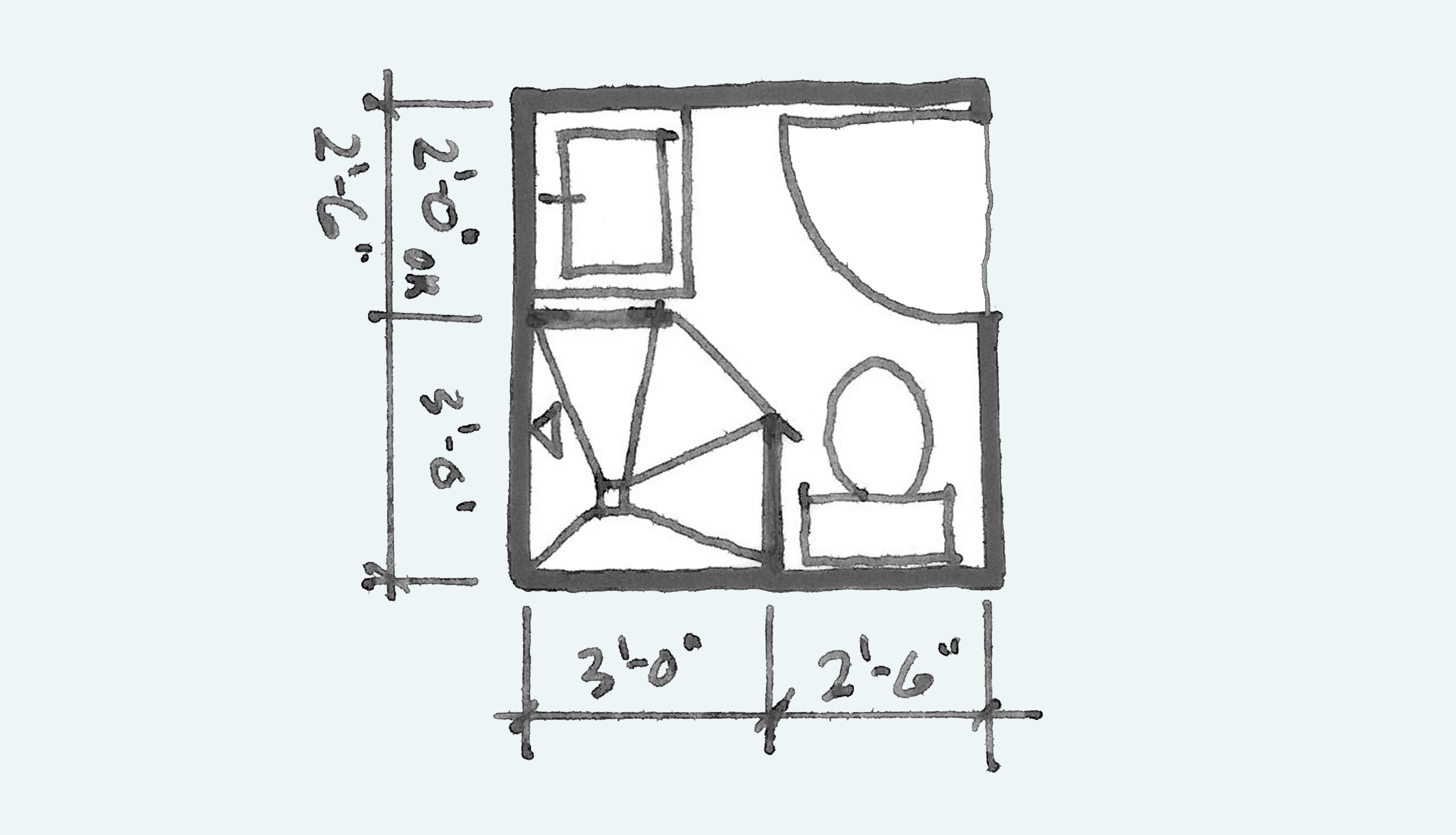Maximizing Space in a Small 3-Piece Bathroom: Small 3 Piece Bathroom Layout

Designing a functional and visually appealing bathroom in a small space presents unique challenges. Limited square footage necessitates creative solutions to maximize functionality and create a sense of spaciousness. This article will explore strategies for maximizing space in a small 3-piece bathroom, focusing on design elements that create the illusion of more space and efficient use of available area.
Using Light Colors and Mirrors to Create the Illusion of More Space
Light colors reflect light, making a space appear larger. In a small bathroom, using light colors on walls, floors, and ceilings can create a sense of openness and spaciousness. Mirrors are another effective tool for creating the illusion of more space. Strategically placed mirrors can reflect light and create the impression of depth, making the bathroom feel larger.
Maximizing Vertical Space with Storage Solutions
Vertical storage solutions are essential for maximizing space in a small bathroom. Wall-mounted cabinets, shelves, and towel racks provide ample storage without taking up valuable floor space. Towel bars can be installed on the back of the door, and a small, narrow shelf above the toilet can be used to store toiletries and other items.
Space-Saving Fixtures and Appliances
Choosing space-saving fixtures and appliances can significantly impact the functionality of a small bathroom. A corner sink takes up less space than a standard sink and can be placed in a corner, freeing up valuable floor space. Wall-mounted toilets, which are mounted directly to the wall, save space compared to traditional toilets. A compact shower stall, with a smaller footprint than a traditional bathtub, is a great option for small bathrooms.
Creating a Functional Layout

A well-designed bathroom layout can transform a small space into a comfortable and efficient sanctuary. By strategically placing the toilet, sink, and shower, you can optimize flow, maximize storage, and create a sense of spaciousness.
Comparing Different Bathroom Layout Options, Small 3 piece bathroom layout
Understanding the advantages and disadvantages of different layout configurations can help you choose the best option for your small bathroom. Here’s a comparison of popular layout options:
| Layout | Pros | Cons |
|---|---|---|
| Single-Wall Layout |
|
|
| Corner Layout |
|
|
| U-Shaped Layout |
|
|
Choosing the Right Materials and Finishes

A small bathroom presents unique challenges when it comes to material selection. The limited space necessitates durable, water-resistant materials that can withstand frequent use and cleaning. Additionally, the choice of finishes plays a crucial role in creating a visually appealing and functional space.
Materials for Floors, Walls, and Countertops
Selecting the right materials for floors, walls, and countertops is essential for a small bathroom. These surfaces need to be durable, water-resistant, and easy to clean.
- Flooring:
- Ceramic Tile: A classic choice for bathrooms, ceramic tile is durable, water-resistant, and comes in a wide variety of styles and colors. It’s relatively affordable and easy to clean.
- Porcelain Tile: A denser and more durable type of ceramic tile, porcelain tile is also highly water-resistant. It’s often used for floors in high-traffic areas.
- Natural Stone: Natural stone options like marble, granite, and slate offer a luxurious look and feel. However, they can be more expensive and require regular sealing to protect them from stains and water damage.
- Vinyl Plank Flooring: A popular choice for its affordability and water-resistance, vinyl plank flooring mimics the look of wood or stone. It’s also easy to install and maintain.
- Walls:
- Ceramic Tile: Similar to flooring, ceramic tile is a popular choice for bathroom walls due to its durability, water-resistance, and ease of cleaning. It’s available in a wide range of colors, patterns, and sizes.
- Porcelain Tile: Porcelain tile offers a more durable and water-resistant option for bathroom walls compared to ceramic tile. It’s also available in a variety of styles and finishes.
- Waterproof Paint: A cost-effective option, waterproof paint can be used on bathroom walls, but it’s not as durable as tile. It requires regular cleaning and maintenance to prevent mold and mildew growth.
- Wainscoting: Wainscoting, a type of paneling, can add a touch of elegance to a small bathroom. It’s typically made of wood or plastic and is water-resistant.
- Countertops:
- Quartz: A popular choice for bathroom countertops, quartz is a non-porous material that is highly durable and resistant to stains and scratches. It’s also easy to clean and comes in a wide range of colors and patterns.
- Granite: A natural stone option, granite is known for its durability and unique patterns. It requires regular sealing to protect it from stains and water damage.
- Laminate: A more affordable option, laminate countertops are made of layers of plastic and paper. They are water-resistant and easy to clean, but they are not as durable as quartz or granite.
